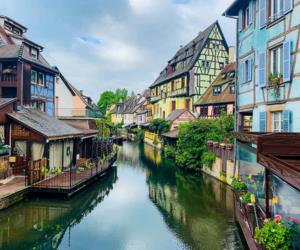When I first planned the Annapurna Circuit trek, the very first thing I looked for was a clear Annapurna Circuit map. It helped me understand the route, distances, and key highlights along the way. We found that having a good map was not just useful, but essential for making the most of this incredible journey through Nepal’s diverse landscapes.
In this article, I will share what I learned about the Annapurna Circuit map and how it helped us navigate one of the most popular trekking routes in the world.
文章重點
Understanding the Annapurna Circuit Route
The Annapurna Circuit is famous for its variety. It takes you through lush green valleys, deep gorges, and high mountain passes. The full circuit traditionally starts from Besisahar and ends in Naya Pul or sometimes loops back to Besisahar, covering about 160 to 230 kilometers depending on the exact route you take.
Our Annapurna Circuit map showed all the main stops along the trail, such as Manang, Thorong La Pass, Muktinath, and Jomsom. Seeing these on the map helped us plan how many days to spend in each place and understand the elevation changes better.
Key Features on the Annapurna Circuit Map
One of the best things about the map is how it highlights important details:
Elevation: You can see the gradual rise in altitude as you move closer to Thorong La Pass, which is the highest point at 5,416 meters. This helped us prepare mentally and physically for the challenge ahead.
Villages and Rest Stops: The map marks popular villages where you can find teahouses, food, and rest. This was useful because we could plan our overnight stays without worrying about where to stop each day.
Road and Trail Connections: The Annapurna Circuit map also shows where the trail crosses roads or where jeep tracks exist. This helped us decide where to join or leave the trek if needed.
How We Used the Map During Our Trek
Before starting the trek, we studied the map carefully. We looked at the distance between stops and the terrain type. The visual information made it easier to pace ourselves. When we were on the trail, the map became a handy reference to check our location and see how far we had come or still needed to go.
Since parts of the trail can be confusing, having a map gave us confidence. We combined it with guidance from our local guide, but the map was our go-to for quick decisions and a bigger picture.
Digital vs. Paper Maps
We brought a paper map with us, but we also used digital versions on our phones. The digital Annapurna Circuit map had GPS tracking, which was very helpful in foggy or unclear sections. The paper map was useful at teahouses or places without phone signal.
Both types worked well together. I recommend having both if you can, so you’re prepared for any situation.
Why the Annapurna Circuit Map Matters
The map is more than just a navigation tool. It’s like a storyteller, showing you the path, the places you will visit, and the incredible landscape you will cross. When you see the entire circuit laid out, it builds excitement and respect for the journey ahead.
We found the map helped us appreciate the scale and beauty of the trek. It reminded us that every step takes us closer to new adventures, stunning views, and unforgettable memories.
Final Thoughts
If you are planning the Annapurna Circuit trek, I highly recommend getting a good Annapurna Circuit map. It will guide you, inspire you, and help you make the most of this amazing route.
With a map in hand, you feel more confident and connected to the trail. It becomes easier to enjoy the journey, knowing exactly where you are and what lies ahead.





